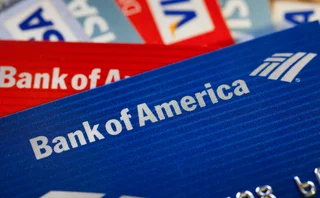Nasdaq Makes Tech Buy with OMX
“The deal should be finalized by the fourth quarter of this year,” says OMX CEO Magnus Böcker, who spoke during an investor-analyst conference call on Friday.
“The deal will be accretive in 2009, and expenses will be taken out in 2010 … so [integration will be complete] in that time frame,” adds Nasdaq CEO Bob Greifeld, who spoke during the same call. “But we will innovate with specific products before then and we will sort out the organizational structure in the days to come.”
“Neither CEO would reveal a definite end date for the technology integration of both exchanges.
“However, Greifeld and Böcker say that the new company will standardize on OMX’s Genium trading platform, which will integrate Nasdaq’s Inet trading engine.
“Inet will be integrated in the third generation of Genium,” says Böcker. “If we have it in there, we can exclude other ideas in this space,” he adds.
“Genium is a brilliant technology and an architecture that allows different best-of-breed applications to hook into its messaging bus. … [Genium will be] the combined blueprint for the enterprise … and the Inet platform would be the best-of-breed for cash equities within Genium,” adds Greifeld.
“There also will be a rationalization of market data products, but nothing has been decided yet, according to Greifeld. With the new company, “we’ll be able to slice and dice data independently of the country or market of origin … which will allow us to create custom market data products,” he adds.
“The new Nasdaq OMX Group plans to have a major presence in London, according officials from both exchanges.
“OMX already has a London presence and we’ll leverage that and add more management,” says Böcker, who says it is a better hub location than either the Nordic region or New York. “We were planning on this in any event, but it’s enhanced by this transaction,” he adds.
“A major question is how the merger will affect several key relationships: Nasdaq’s relationship with the London Stock Exchange (LSE), of which Nasdaq owns approximately 30 percent; OMX’s relationship with the International Securities Exchange (ISE), for which OMX provides the trading platform; or OMX’s EDX joint-venture with the LSE.
“We are not going to comment directly on the London Stock Exchange,” says Greifeld.
“This transaction should not affect OMX’s existing relationships, says Böcker. “The ISE has been honorable about the technology from its side,” he says. “We will continue to support it and hope the relationship will continue into the future.”
“Officials from both exchanges are confident that the transaction can generate considerable synergies of $150 million annually, with $50 million in revenue synergies and $100 million in cost savings. Each exchange also stressed its strong track record in merger integration as an important factor in attaining those synergies.
“We acquired Brut, we acquired Inet and combined the technology onto a single platform … delivered increased liquidity to our customers and lowered transaction rates. As basic as it sounds, there is only one other exchange on the planet that’s done that,” says Greifeld. “And that happens to be OMX,” adds Böcker. “Looking at what we’ve done in the last three years this is a natural continuation of our strategy,” says Böcker.
“The planned $100 million in cost synergies are expected to be realized over the next three years, largely driven by technology. “By far the largest part of the [cost] synergies will come from technology and auxiliary systems around technology,” says Böcker.
“We have datacenters, operational sites … [and] networks that we can share in a different way. OMX today has operational and datacenters—in the U.S., London, the Nordics and Asia—that we can share in a different way,” adds Böcker.
“The ability to leverage OMX’s expertise in derivatives trading technology was also seen as an important factor to help Nasdaq build its derivatives business. “Clearly, OMX has tremendous experience and success in the derivatives marketplace,” says Greifeld. “This experience and success will be an invaluable aid to Nasdaq as it looks to expand its derivatives operations domestically and internationally.”
“This won’t stop Nasdaq from building its own options exchange later this year, however, explains Greifeld. “[The new options exchange] will be augmented by this transaction in the days to come,” he adds Greifeld.
“Another potential revenue synergy was also cited as the ability to “improve linkages” between markets by increasing the visibility and trading of U.S. companies by Nordic investors and vice versa. “As a result of that you’ll see increased trading velocity in the market, which improves liquidity and obviously helps us on a financial basis,” says Greifeld. Whereas turnover—the percentage of stocks’ market capitalization traded in one year—is currently 250 percent on Nasdaq it is just 130 percent on OMX, adds Böcker
Staff Reports
Only users who have a paid subscription or are part of a corporate subscription are able to print or copy content.
To access these options, along with all other subscription benefits, please contact info@waterstechnology.com or view our subscription options here: http://subscriptions.waterstechnology.com/subscribe
You are currently unable to print this content. Please contact info@waterstechnology.com to find out more.
You are currently unable to copy this content. Please contact info@waterstechnology.com to find out more.
Copyright Infopro Digital Limited. All rights reserved.
As outlined in our terms and conditions, https://www.infopro-digital.com/terms-and-conditions/subscriptions/ (point 2.4), printing is limited to a single copy.
If you would like to purchase additional rights please email info@waterstechnology.com
Copyright Infopro Digital Limited. All rights reserved.
You may share this content using our article tools. As outlined in our terms and conditions, https://www.infopro-digital.com/terms-and-conditions/subscriptions/ (clause 2.4), an Authorised User may only make one copy of the materials for their own personal use. You must also comply with the restrictions in clause 2.5.
If you would like to purchase additional rights please email info@waterstechnology.com
More on Trading Tech
After acquisitions, Exegy looks to consolidated offering for further gains
With Vela Trading Systems and Enyx now settled under one roof, the vendor’s strategy is to be a provider across the full trade lifecycle and flex its muscles in the world of FPGAs.
Enough with the ‘Bloomberg Killers’ already
Waters Wrap: Anthony interviews LSEG’s Dean Berry about the Workspace platform, and provides his own thoughts on how that platform and the Terminal have been portrayed over the last few months.
BofA deploys equities tech stack for e-FX
The bank is trying to get ahead of the pack with its new algo and e-FX offerings.
Pre- and post-trade TCA—why does it matter?
How CP+ powers TCA to deliver real-time insights and improve trade performance in complex markets.
Driving effective transaction cost analysis
How institutional investors can optimize their execution strategies through TCA, and the key role accurate benchmarks play in driving more effective TCA.
As NYSE moves toward overnight trading, can one ATS keep its lead?
An innovative approach to market data has helped Blue Ocean ATS become a back-end success story. But now it must contend with industry giants angling to take a piece of its pie.
BlackRock, BNY see T+1 success in industry collaboration, old frameworks
Industry testing and lessons from the last settlement change from T+3 to T+2 were some of the components that made the May transition run smoothly.
Banks seemingly build more than buy, but why?
Waters Wrap: A new report states that banks are increasingly enticed by the idea of building systems in-house, versus being locked into a long-term vendor contract. Anthony explores the reason for this shift.







